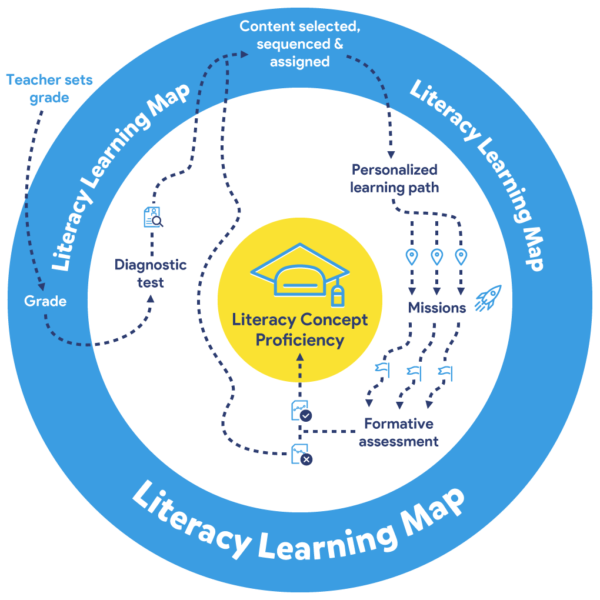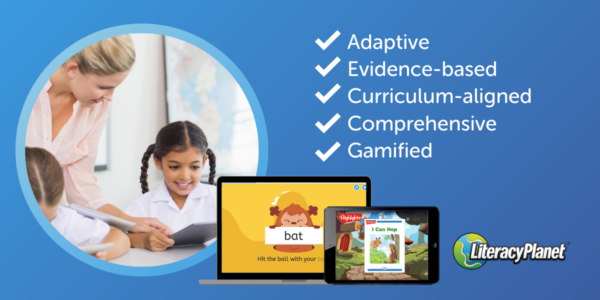Closing the connectivity gap and improving access to digital resources in classrooms has been a priority for education systems in many countries over the past decade. Equitable access is recognised as critical for educational opportunity.
Today, digital resources are often integral to subject learning. Most teachers use them regularly, and most educators believe they have a positive impact on instructor effectiveness and student outcomes.
We know however that access and use of digital technology doesn’t in itself lead to improvements in proficiency, or guarantee better learning outcomes. This is shown in global educational studies such as the International Association for the Evaluation of Educational Achievement’s (IEA) International Computer and Information Literacy Study (ICILS), and the OECD’s Programme for International Student Assessment (PISA).
As with all teaching resources, it comes down to using the right ones, in the right way. The positive impacts of digital resources in classrooms correlates directly to how they are used, which is highly dependent on the skills, methods and practices of teachers. Confidence and competence of class teachers, and support from school leaders, are key factors to maximising the potential benefits of digital teaching resources. As Bill Gates once famously said: “Technology is just a tool. In terms of getting the kids working together and motivating them, the teacher is most important”.
So, while digital learning can transform classrooms, how can classroom teachers best utilise it to improve English teaching?
The answer is an adaptive program that ticks four important boxes:
- Evidence-based
- Curriculum-aligned
- Comprehensive
- Gamified
This offers teachers, and their students, the best of what digital learning can provide for subject teaching. It meets the diverse demands of today’s classroom, in a way that only modern technology can.
Adaptive programs
Back in 2014, in his book Digital Leadership: Changing Paradigms for Changing Times, well known educator and author Eric Sheninger wrote “Possibly one of the most important shifts needed in schools is to provide individualised and personalised learning experiences to students”.
The benefits of personalised learning are many, and well documented. Delivering it in a grade-level English class, made up of different learner types, varying abilities, and a range of needs for support, extension, and everything in between, can be a challenge.
However, this shift is now underway, and in many cases has already happened, facilitated by developments in software technology that are making it easy. Artificial intelligence has made its way into school classrooms, in the form of adaptive software programs.
An adaptive program can take best-practice and evidence-based pedagogical approaches, and tailor them for every student in the class. It is designed to personalise instruction for optimal individual learning outcomes.
Well-built adaptive programs use advanced algorithms, iterative assessment, and predictive analytics to modify the delivery of content. They respond to individual student performance in real time, and differentiate and customise the learning experience to an individual’s needs.

Boosting efficacy
An adaptive program based on the latest advances in learning sciences, and evidence-based pedagogical approaches, provides a resource that teachers can trust. Other key factors will improve outcomes even more.
Content is critical. Every piece of content should be mapped to the curriculum, and the deeper and broader the content available for the program to draw from, to sequence a personalised learning path, the better.
As an example, a systematic approach that combines phonics, including both synthetic (explicit) and analytic (explicit) exercises, with sight words instruction is better for reading acquisition. Research also shows that combining instruction from different literacy concepts and strands, such as phonics and sight words, with spelling and vocabulary, improves learning outcomes.
Gamification, the integration of game mechanics, also plays a specific role in engaging and motivating students, and has been shown to have various academic, psychological and behavioral benefits. An effective gamified platform improves student participation, enjoyment and performance. It fosters an enthusiastic attitude to the subject, makes the learning experience more meaningful, and drives students to achieve their best.
Research into the impacts of digital programs with these features is yielding some exciting findings. Independent clinical trials and in-school studies of LiteracyPlanet’s program for example, have found it has a “large and significant” treatment effect on reading outcomes, is effective in decreasing attainment gaps, and students using it achieve better results in a variety of literacy skill areas.

Sources:
- 2019 State of the States, EducationSuperHighway, United States.
- Education Technology Use in Schools – Student and Educator Perspectives (2019), Gallup Inc. and NewSchools Venture Fund, United States.
- International Association for the Evaluation of Educational Achievement’s (IEA) International Computer and Information Literacy Study (ICILS), The Netherlands.
- OECD Programme for International Student Assessment (PISA), France.
- Bingimlas, K. A. (2009). Barriers to the Successful Integration of ICT in Teaching and Learning Environments: A Review of the Literature. Eurasia Journal of Mathematics, Science and Technology Education, 5(3), pp. 235-245. https://doi.org/10.12973/ejmste/75275, Australia.
- Nah F.FH., Zeng Q., Telaprolu V.R., Ayyappa A.P., Eschenbrenner B. (2014) Gamification of Education: A Review of Literature, In: Nah F.FH. (eds) HCI in Business. HCIB 2014. Lecture Notes in Computer Science, vol 8527. Springer, Cham, United States.
- Majuri, J., Koivisto, J., Hamari, J. (2018). Gamification of Education and Learning: A Review of Empirical Literature, GamiFIN Conference 2018, Finland.
- McArthur G., Kohnen S., Jones K., Eve P., Banales E., Larsen L., Castles A. (2015), Replicability of sight word training and phonics training in poor readers: a randomised controlled trial. PeerJ 3:e922 https://doi.org/10.7717/peerj.922, Australia.



